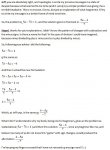errequeerre
New member
- Joined
- Jun 18, 2013
- Messages
- 16
Hi,
I transforming a formula (5a + 7b = 4), and I get the following solution for b (b = (4 - 5a)/-7 , however, the key in the book says: (4 - 5a)/7
Is that a rule? I cannot understand why?
If anybody could help, I'd be very thankful.
Regards,
I transforming a formula (5a + 7b = 4), and I get the following solution for b (b = (4 - 5a)/-7 , however, the key in the book says: (4 - 5a)/7
Is that a rule? I cannot understand why?
If anybody could help, I'd be very thankful.
Regards,

